
Table of Contents
EDITOR'S NOTE
Is T20 Cricket Saving Our Game?
Khalid Mohidin
Founder and Editor - Cricket Fanatics Magazine
T20 cricket is a funny game... The format promises to entertain and be the cure for the decrease in the popularity of cricket globally.
T20 cricket promised to draw in younger or new fans to the game because it is shorter than the other two formats, which makes it more attractive to watch live.
Not only has T20 cricket managed to entertain a new generation of cricket fans, but it has also brought a massive money influx into the sport.
Women’s cricket has continued to become more popular and entertaining largely due to the exposure cricketers are getting by playing in domestic leagues.
The IPL has become one of the most-viewed sporting tournaments in the world.
Now, one issue that this causes is that the richer countries and cricket boards control the monopoly, with their wealth increasing. They host the biggest T20 competitions that bring in record-breaking revenue streams and viewers to the tournament – live, digital and tv views.
The more money they make, the more money they can pump into development and other formats (Tests, ODI).
Underdeveloped or underprivileged countries struggle to duplicate that, so how do these nations compete? Smaller nations are the majority and without them, the sport loses quality.
Has T20 improved our sport? Or has the format done more harm than good?
So I went on a journey of finding out about how T20 Cricket has affected South African cricket, with a particular emphasis on Domestic Franchise Leagues.
In this issue, we try to answer the difficult question, is T20 saving or killing our game?
We also get exclusive insight from Dewald Brevis on his experience in the IPL..
So sit back, grab a snack, a beverage and enjoy our 2-year-anniversary edition. It’s all about T20 Cricket.
Want to help us promote South African cricket? Become a Patreon today!

How you can help PROMOTE SA Cricket
By Khalid Mohidin
A very special announcement that I believe will change the face of the way cricket is supported in South Africa.
Hey, guys! Welcome to Cricket Fanatics Magazine. I would like to welcome you to the first and only fan-driven Cricket publication in South Africa.
I started this venture on 1 July 2019 with a vision to get fans from all walks of life engaged with the game and the personalities in cricket.
We want to tell the untold stories of South African cricket and we want fans to be heard.
Since we started, we covered the Mzansi Super League, Women’s Super League, Proteas Men and Women International Test, ODI and T20I series, as well as school and club cricket, with the aim of providing entertaining, engaging and educational content.
But hasn’t stopped there.
We started a Monthly Magazine where we provide multi-media content, including exclusive features, opinion pieces and analysis.
This works hand-in-hand with our YouTube channel where we produce unique cricket shows that allow fans to call in and have their say.
We have the Daily Show, which reveals all the major talking points in South African cricket.The Sunday Podcast Show where we sit back, relax and engage with the live chat, answering all the questions fans have about us and the game.
We have Off-Side Maidens, the first ever All-Women’s Cricket Show on YouTube, which helps empower women in cricket and gives them a place to share their own views on not only women’s cricket but all cricket.
We have a Legends show, where we interview all legends in cricket.
To produce all of this, we’ve invested a lot of money, time and effort to bring this to you for free.
But to keep this going we need your help. So we have opened a Patreon account.
Today, we are fortunate that technology has enabled anyone to become a patron of creative work, even if they are not a billionaire.
We have therefore launched a campaign for you as a Cricket Fan to become a patron and support us as an independent, bootstrapped publisher.
As a Patron, you also get your voice heard as a Fan.
Plus: You have the opportunity to become more engaged with the content we produce.
Every month we produce at least:
- 60 Website Articles
- 20 Daily Video Shows
- 4 Weekly Podcasts
- Match Previews
- Match Reviews
- Video Interviews
- And more…
So please join our Patreon today.

“I always play fearlessly” – Dewald Brevis
By Ongama Gcwabe
Mumbai Indians and Titans Cricket batter, Dewald Brevis, expressed how the support and the backing from everyone at Mumbai propelled him to excel in the biggest of all stages in domestic T20 cricket.
The 19-year-old Dewald Brevis has been on every cricket fan’s mind ever since the U19 World Cup earlier this year. When he was picked in the first round of the IPL Mega Auction for a whopping R6 Million by Mumbai Indians, there were no surprises.
ALSO READ: “I’ll always be ready for international cricket” – Dewald Brevis
Brevis lived up to the expectations and showed what he can do at a big stage and who he can potentially become with proper guidance and support.
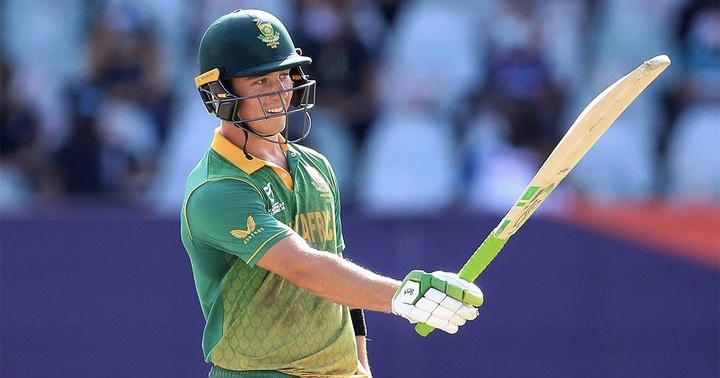
The youngster credited his MI teammates, staff members and the skipper Rohit Sharma for the backing which then translated to him playing his own game and doing well in his very first season at the IPL.
“The setup and everything at MI (Mumbai Indians) are really so amazing because there are so many people and support around you,” said Brevis.
“I believed in the coaches and everyone, that they would plan my career and everything perfectly for me. I put my trust in them and believed that they would make the right decisions for me. Rohit Sharma and them, wanted me to be true to my game and the way I want to play.
“I always play fearlessly and embrace the moment. Later on in the tournament, I had to learn to maybe go a gear down and adjust a bit. That’s all a part of learning.”
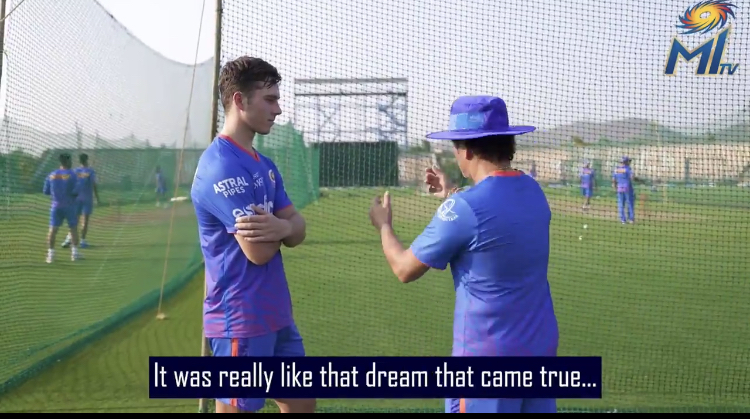
For a young man playing in only his second senior men’s tournament, Brevis needed reassurance and backing from everyone around him.
Most importantly, he needed to be backed to go out in the middle and enjoy himself and play his own style or brand of cricket.
In a tournament like the IPL, not only your teammates and management can provide tips or nuggets that would help your game and your career.
Players and staff from the opposition teams also usually have a few words of advice to share, especially to a prodigy of the calibre of Brevis.
For Brevis, KL Rahul gave him advice that he says will stay with him for a long time to come.
“For me, I believe in my strengths, I won’t go away from those. If I fail, it’s a part of life, it happens. It’s important to be yourself. KL Rahul told me this,” said Brevis.
“He told me the way you play is great and you shouldn’t change anything about who you are because that’s how you will succeed. Obviously, being fearless also means being smart about your fearlessness,” he concluded.
The youngster is now back home in South Africa and will soon join the Titans team for the off-season preparations.
One can only assume that the coaching staff, teammates and everyone involved at Northerns Cricket will follow the blueprint that the Mumbai Indians started in order to create an environment in which this youngster and many others will thrive.
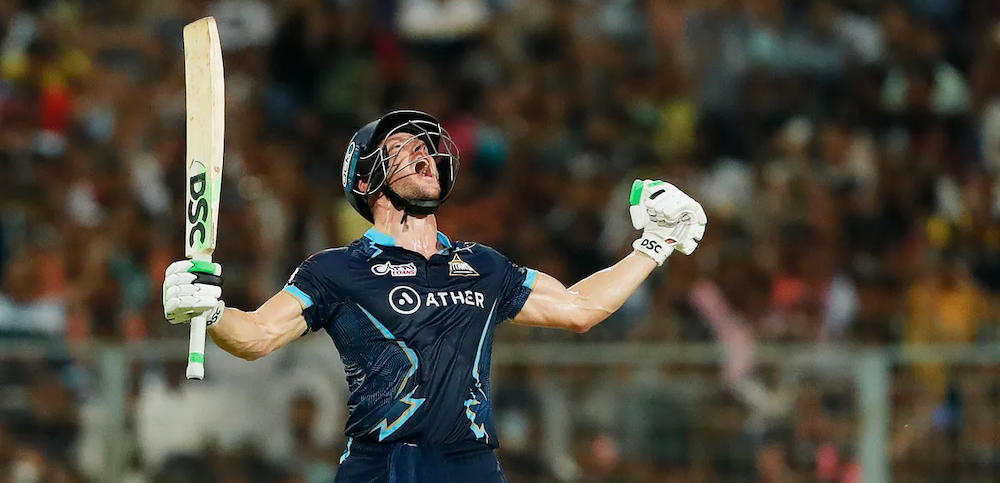
David Miller’s journey to IPL stardom
By Chris Chiwanza
Any other coach would probably have brought in David Miller to bat at number five or six. Not Mike Bechet… writes Chris Chiwanza
Miller was an opener and Bechet believed that the best way to utilize the boy’s talents was to open with the batting with him.
Miller had caught the eye of every school in the province as an opening batter. Top schools were falling over each other offering bursaries and he had chosen Maritzburg College.
Bechet knows a prodigious talent when he sees one. One of the few standout talents that spent their formative years under his care and guidance is Kevin Pietersen. Bechet knew from the onset that Pietersen was a star. He also knew immediately when he saw David Miller.
“He was a humble young man with immense sporting talent,” says Bechet. “He was a special talent. Also very disciplined and respectful towards his older teammates.”
Bechet believed that young David Miller, aged 14, had both the talent and temperament to open the batting against the St. Johns’ first XI attack.
On debut, Miller faced a then-18-year-old Scott Spedding. Spedding eventually went on to carve a career as a rugby full-back for the French national team, but, back then he was an aggressive opening bowler. He bowled with serious heat.
Miller collapsed in a heap after the first delivery. Spedding had hit him in the chest with a short delivery.
“I thought to myself, ‘Now what? Have I done the right thing?’” Bechet recalls.
Fortunately, Miller was not seriously injured but would carry the bruise on his chest for a few days. There was never a discussion over whether Miller would have to retire hurt or not.
Even if the coaches had considered the option, Miller would not have agreed to the idea. They would have required an earth-mover to remove him from the crease.
The youngster put on a brave face, doing his best to be as inscrutable and expressionless as possible, and continued with his debut. Miller scored an impressive 42 off 69. Maritzburg College went on to win the match by an impressive 88 runs.
If anyone had doubts about Miller, they were laid to rest during Michaelmas Week. In his second match, facing an Affies attack led by Neil Wagner, Miller put together a 127-run opening partnership with Tarlton Hepburn.
Miller blazed through the Affies attack scoring 67 off 70 balls. Bichet believed that if Miller was good enough, then he was old enough to play. At 14, Miller played 22 of the 23 games Maritzburg College played that year.
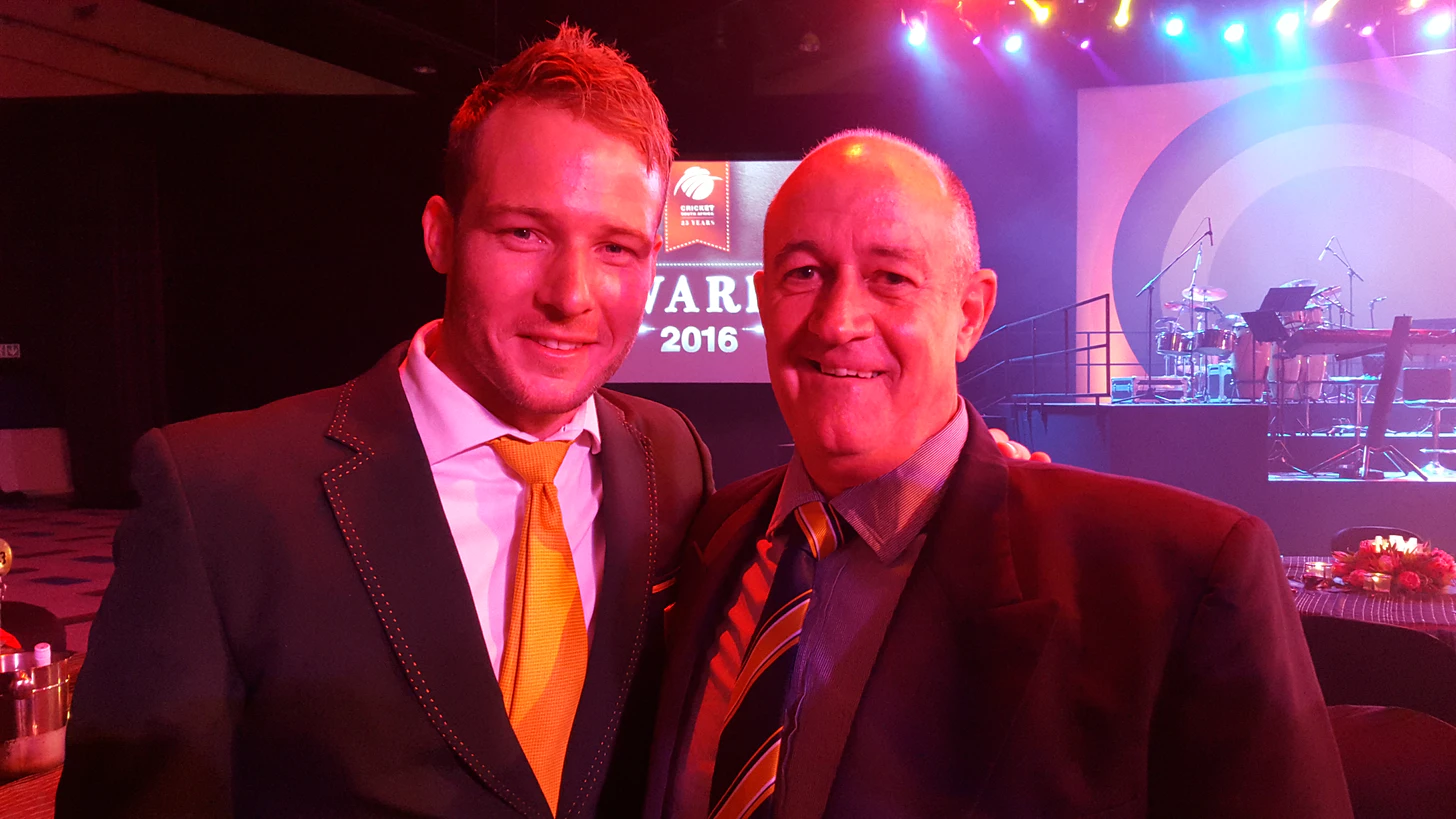
With bat in hand, Miller was every coach’s dream. But, at 14, Miller had not yet matured as a cricketer and had a tendency to lose concentration in the field. Like any other kid, he had a tendency to drift off while fielding. But, that resolved itself as he grew older.
“The first bit of advice I gave David was that whilst in the team he was a team mate, but whilst at school (hostel and classroom) he was still a grade 9 boy, and so, he needed to develop friendships amongst his peers NOT his team mates, all of whom were 17 and 18,” says Bechet.
Miller developed at a quicker pace than his peers because he played up. In sports, playing up is when younger and smaller athletes compete with older, more robust and better athletes.
The advantage of playing up in sports is rooted in how younger players are challenged more. Older players are more likely to bully younger players and are susceptible to complacency as their skills are not put to the test.
When younger players are continuously challenged by older, more robust and better-skilled athletes, they are driven to what Mark Guadagnoli and Tim Lee call the optimal challenge point.
In their book, The Best: How Elite Athletes are Made, Tim Wigmore and Mark Williams show how Serena Williams benefitted from competing more with her sister, Venus Wiliams, who constantly defeated young Serena.
Athletes who play up as youngsters learn at an accelerated rate because of how much they fail. Think of it in the context of lifting weights. If you are lifting weights and it’s easy, you are not improving.
Despite his success in his first two innings, David Miller ended the 2004 season with an average of 17.7. The half-century against Affies was his highest score that season. He was the eighth-best batter in his team.
The next season, 2005, Miller was still facing bowlers three or so years older than him. He averaged 28.8. Miller scored four half-centuries, with a highest of an unbeaten 73, on his way to 518 runs from 20 innings.
In the 2006 and 2007 seasons, Miller scored the most runs for Maritzburg College. In 2006, he ended the year with an impressive average of 48.9.
Miller scored four centuries and six half-centuries on his way to 1271 runs from 32 innings. He was 474 runs clear of the next best batter from his school. In 2007, Miller racked up 1053 runs (two centuries and seven half-centuries) from 21 innings. He averaged 65.81.
In 2007, after Miller had matured as a player, Bechet watched him play what is probably his best innings as a schoolboy. Miller scored 151 runs off 115 deliveries (16 fours and 3 sixes) in a match against Hilton. T
he match was a day-night 45 over-game played at the Pietermaritzburg Oval. Miller’s 151 powered Maritzburg to a total of 333/7.
David’s father, Andrew Miller, a Kearsney Old Boy, played high school cricket and was a decent country districts cricketer. Instead of maintaining his father’s level, David took things to the next level.
Despite his interest and cricket knowledge, Andrew Miller did not interfere with how his son was coached. Andrew Miller embodied the same humility that Bechet saw in David. He was not a ‘Tiger parent.’
Despite his obvious natural talent, David Miller worked hard on his batting. He spent a lot of time in the nets and was always asking Bechet questions on how to improve.
Miller had a rage to master his craft, as Ellen Winner, author of Gifted Children, terms the strong intrinsic motivation to improve common in many prodigies. At 14, Miller had already developed the makings of a classical left-handed batter.
But, David Miller did not specialise in cricket until after his Grade 12 year. Researchers assert that there are numerous benefits to late specialization. A number of studies show that children who specialise early are more susceptible to injury and burnout compared to their counterparts who do not.
According to a study that looked at gold medal winners from the UK, elite athletes generally specialised later when compared to promising young athletes who did not make it to the top.
The trend also follows in cricket. Miller’s former Proteas teammate, the inimitable AB DeVilliers played rugby for Affies, his high school. England batter Jonny Bairstow was still toying with the idea of a rugby career in his early 20s.
Proteas Test captain Dean Elgar played squash until he suffered an injury that forced him to stop competing. There are countless other examples of elite cricketers who specialised late and are better because of it.
At Maritzburg College, David Miller learned and mastered hockey, a sport primarily designed for right-handers. Miller grew into a fierce striker and scored some unbelievable goals when he played in the KZN Midlands U18A team in his grade 12 year. That season, he scored 20 goals in 18 games.
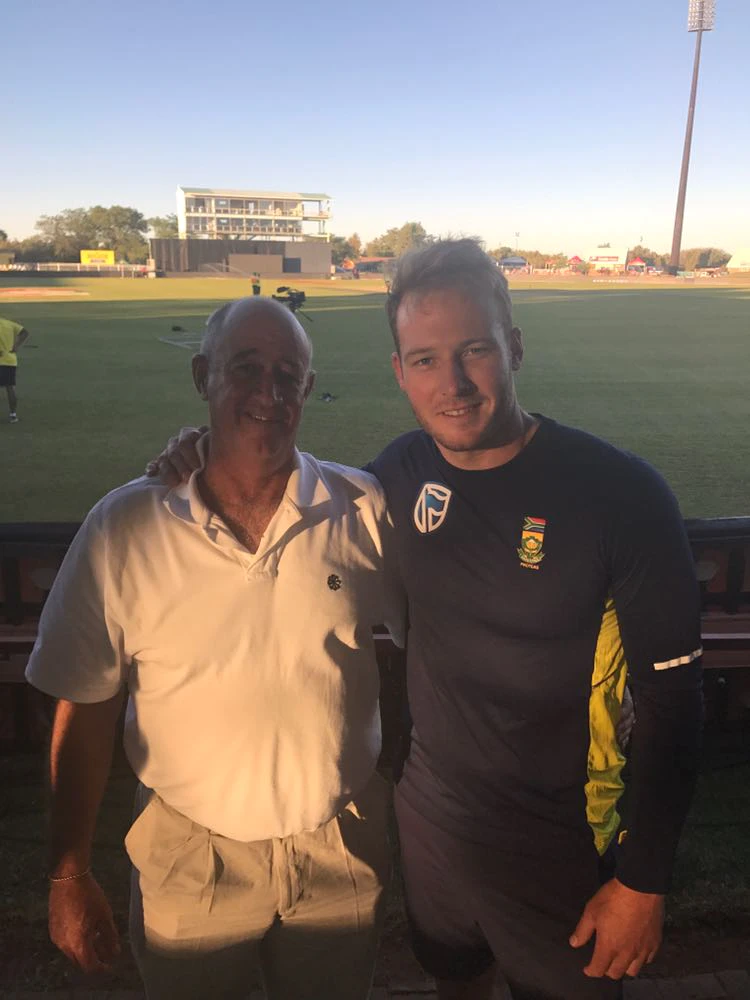
David Miller with Mike Bechet in Kimberley on the eve of Miller’s 100th ODI
“David was arguably a kid with the best hand-eye coordination I have ever seen. I could compare him with Jonty Rhodes,” says Bechet.
But, Miller was not all sports while at school, he had time to play and be with his peers. Twice, Bechet caught Miller bunking from the hostel, a favourite pass time for many youngsters. Boys will be boys.
Bechet beams with pride that David Miller has finally won an IPL trophy. He has followed Miller’s IPL career intently and feels that in the past teams did not give him the best chance to shine.
At number five, Miller was best positioned to play his natural game. No two games were the same, sometimes he came on after an early collapse and he had to dig in and rebuild, at other times he had to have a quick look before launching an attack. Either way, he never came in too late.
“Like always, this year I watched every Gujarat Titans IPL game. It gives me great joy and pride to see him performing on the big stage,” says Bechet.
David Miller and his former coach and housemaster still keep in touch, they text each other on WhatsApp regularly.
Whenever Miller is in Johannesburg and can spare a moment, the two meet up and catch up. Their relationship is so special that Miller flew Bechet to Kimberley to watch him play his 100th ODI.
“It was very humbling and special for me to share in that moment with David,” says Bechet.
New! Business Corner
Cricket Fanatics Magazine has the visibility, infrastructure, expertise and toolset to promote your brand, business, product or service.
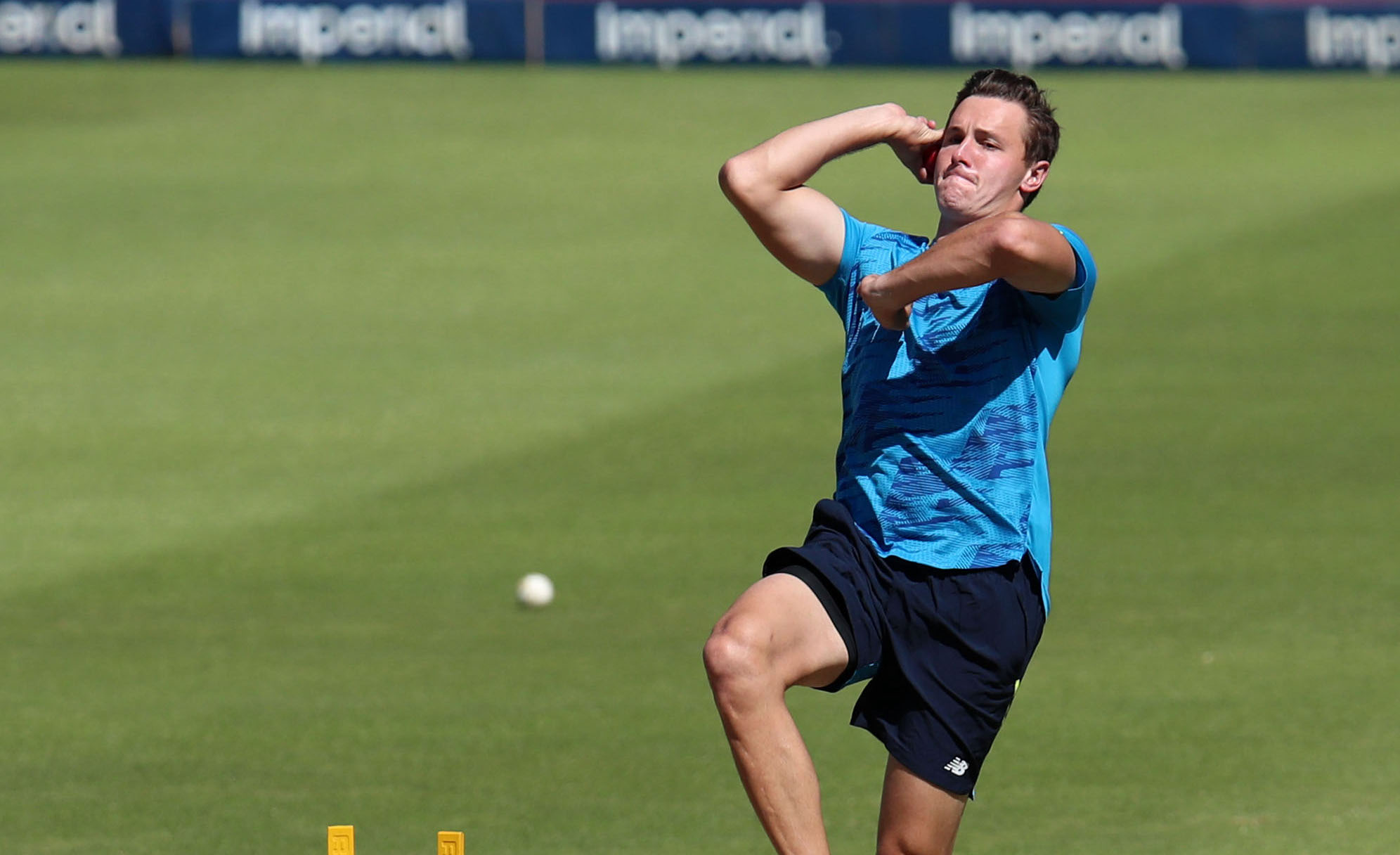
"Trial and error has been a big part of my learning process"
By Abhai Sawkar
It may sound very cliche, but the 2021 Caribbean Premier League ended with a bang. The final between the St. Kitts & Nevis Patriots and the St. Lucia Kings went down to the wire, and it took a spirited cameo from one of the youngsters to seal the deal.
Such has been the story for most of the tournament, with young newcomers as well as some of the highly experienced T20 cricketers in the world feeling very much at home.
South Africa was pretty well represented in that CPL campaign, with three players taking part. Two of them are well-known Proteas stalwarts: former all-format captain Faf du Plessis and the evergreen leg spinner Imran Tahir.
But the third player - seam-bowling allrounder Migael Pretorius - also enjoyed the event with plenty of success for a first-timer.
Pretorius hasn't yet played a match at international level, but he has been on the fringes of the Proteas side in more recent times. Initially, he seemed to be a surprise signing, since a lot of the South Africans who play franchise cricket have played some international cricket.
But for Pretorius, T20 leagues have been his launch pad to showcase his skillset and potentially open more doors.
In 2021's CPL, Pretorius claimed 16 wickets in 10 games at a respectable average of 22. His economy rate of 9.54 was a bit on the higher side, but more importantly, he was the go-to strike bowler for the Jamaica Tallawahs skipper, Rovman Powell.
Pretorius boasts reliable returns across all formats, but his improvement in the T20 format has undoubtedly been a highlight. It was a natural format for the quick, as it reminded him of school cricket. He was nurtured well during his early days, and this was a key catalyst for his gradual rise to the top.
"Yeah, we played in T20 competitions at school level. I was fortunate, since we had very good coaches. When I was young, I can't remember a whole lot. I wasn't necessarily thinking of playing cricket after school. The kids these days learn a lot more than I did when I was playing cricket."
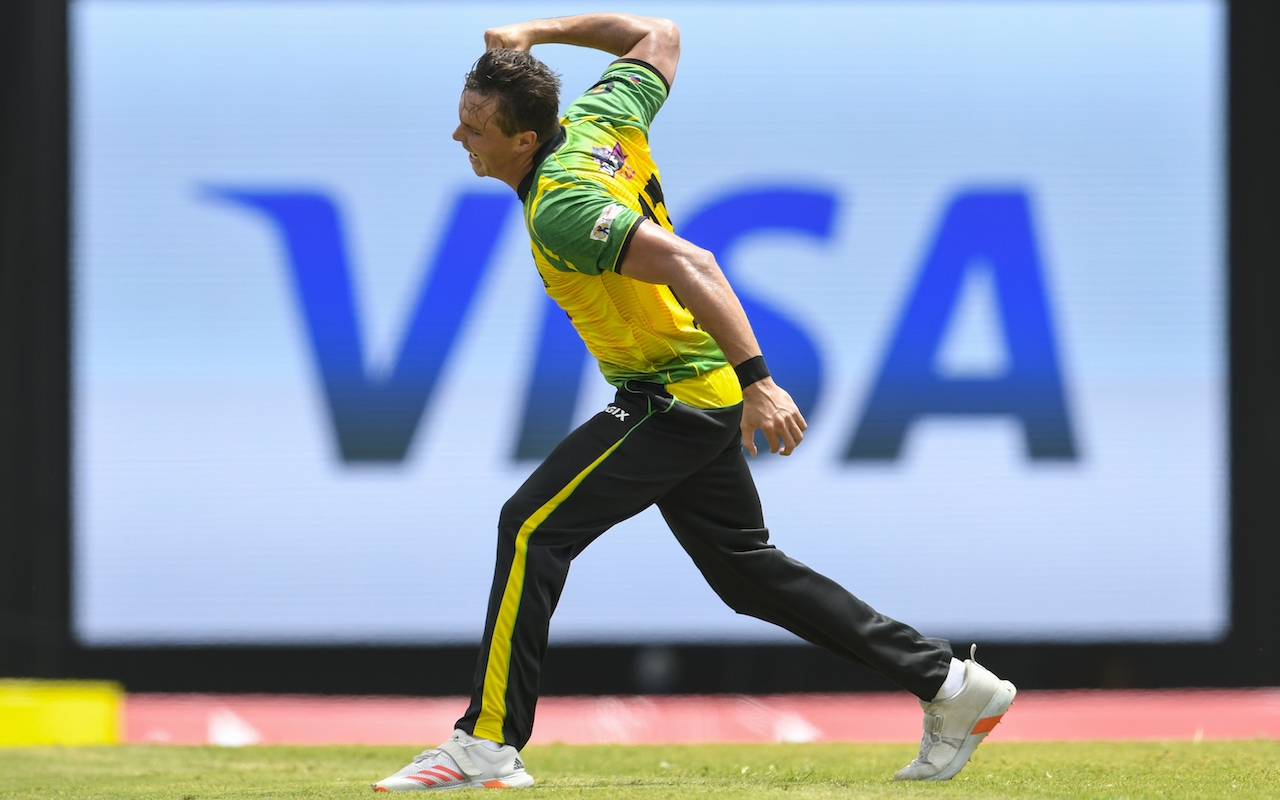
Now, T20 cricket requires a wide spectrum of skills, especially for seamers. In the longer format, you often see the quicks maintain a consistent line and length, but the shortest format demands more variations, since batters have now become more and more creative with their strokeplay over time.
"First of all, I love playing all formats," said Pretorius. "Personally, I feel Mark Charlton [my provincial coach] was the one who forced me to learn more about the game. In Bloem, AD (Allan Donald) has been a very steady coach and has a very good cricketing brain. It's very important to have the right mindset and approach when it comes to training."
Pretorius has been a frequent feature in the CSA T20 Challenge - he was part of the Lions side that won the 2018-19 tournament and more recently, he relocated to the Knights. Interestingly enough, he hasn't played in the Mzansi Super League, South Africa's new flagship T20 league. However, the 2021 CPL provided priceless experience for the then 26-year-old.
"Well, I haven't played a whole lot of local T20 cricket in SA. I've learned plenty from guys like Farhaan Behardien and Shaun von Berg. Trial and error has been a big part of my learning process."
Signing up with the Jamaica Tallawahs in the CPL was more than just a pleasant surprise. It was a goal that Pretorius was tirelessly working toward. His methodical outlook as well as his burning aspiration to deal with and excel in challenging assignments has proven to be very handy.
"Right, I was ready to come and play. I wasn't aware of the conditions, but I knew people who have played here. Initially, it was a struggle to adjust but I was very happy to get the call. As soon as I got here, I was preparing for what was to come. It's been a fun tournament, and I'd love to get back here again next time."
The CPL call came at such an opportune juncture for Pretorius, and he's had the privilege of playing alongside and against some of the best in the business in T20 cricket.
"Playing with them [the superstars] is nice, but when you're on the field, they're like any other players to learn new things from. Everyone's very down-to-earth, and ultimately we all play to win. It's great to chat with everyone and share ideas.
"In the Caribbean, everyone goes hard and they don't care if they get out, which is a good thing. Learning from them was memorable for me. I write down a lot of things that I learn, and it'll be nice to bring these things back home."
All-rounders in T20 cricket are a highly on-demand commodity. There aren't too many players who can regularly take wickets as well as hit a long ball down the order. The Proteas have struggled to consistently finish innings on a high, and Pretorius has been tipped as a potential solution.
He's primarily a bowler, but during the 2020-21 domestic season, his batting began to improve to a point where he'd be considered a bowling allrounder. The repeated calls for his inclusion in the Proteas setup has been very humbling, and he's expressed his gratitude.
"I've concentrated on my batting for the past year and a half. During the early part of my career, I didn't really take my batting that seriously and it's proven costly. When it comes to finishing, speaking to guys like Carlos [Brathwaite] and Dre Russ [Andre Russell] has been an eye-opener.
"I'll share some of the tips to the guys back home. I'm thrilled to hear that folks are backing me. Honestly, it's something that's not in my control. At the end of the day, I just want to do the best I possibly can."
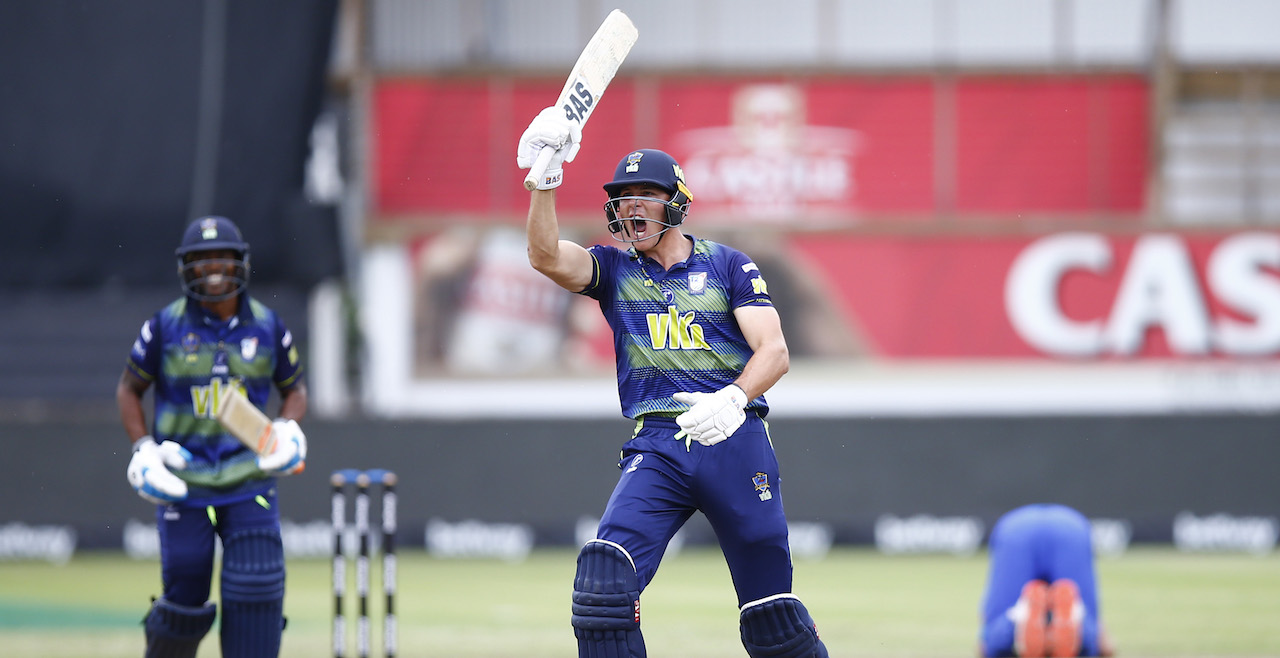
Going back to bowling, sometimes the learning curve in T20 cricket can be a bit tricky. It heavily depends on how quickly players can adapt and on multiple occasions, think outside the box.
Quicks like Kagiso Rabada, Lungi Ngidi, and Anrich Nortje have had to constantly modify their game plan to be able to succeed in all formats of the game.
The T20 game can be harsh at times, especially for bowlers who send down the death overs. Even the slightest miss in length will result in a boundary, and it just goes to show that death bowling requires a robust combination of accuracy and reproducibility.
"I've been trying to slow down my slower deliveries. We didn't really have much time to train here. Heading into next year, I'll do more to prepare for what I want to do differently. I know that I have to bowl to my field as best as I can.
"Mentally, you need to have a couple of stock deliveries that you know won't go for a boundary. If you can plan ahead of time and start learning to practice, you'll improve your game quickly. You need to think like you're the captain, since you want to put together a game-changing performance."
When asked about his favorite moment in the CPL, Pretorius chose to bring up a rather difficult outing. It's an excellent argument, since some of your relatively frustrating returns can serve as a strong motivating factor.
We've seen it with team India, when they got bowled out for 36 in the first Test against Australia, and then came roaring back to take the series despite having multiple mainstays out of the picture due to injuries.
With Pretorius, it's no different. His active-learning approach and his general modus operandi is something that everyone can learn from. Whenever things don't quite go your way, you can't continue to dwell in the frustration and anguish and let that get the better of you.
"Well, I got smashed quite a bit, but it was the last over to Pollard which was the biggest learning curve I had there. I felt that my back was against the ball, since nothing seemed to be working. I just had to relax and step back a bit, but I didn't. And I got hit for extra runs as a result."
The CPL has been the ideal T20 experience for Migael Pretorius. As expected, for someone who played for the first time there, it was a bit of a mixed bag.
His tournament was studded with strong displays as well as a couple of forgettable games. But most importantly, he has found a way to create a favourable first impression despite not having enough time to acclimatize to the conditions on offer.
Even though he has plenty of domestic success back at home, this has been a watershed phase of his career.
He's been part of a Test and a T20I squad to date, but performances abroad like these have successfully amplified his progress and it's fair to say that it's only a matter of time until we see him regularly playing for South Africa.
Advertisement
Ezra Poole's Online Wicketkeeping Academy
Learn how to Master The Craft of Wicketkeeping Without Having to Hire a Full-Time Personal Coach.
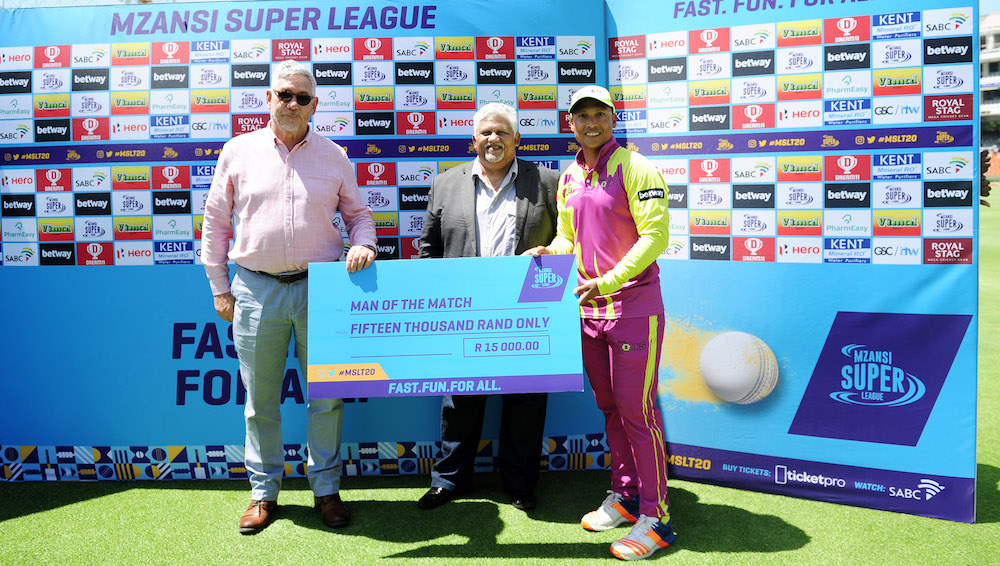
The rude, welcomed interruption of Global T20 Cricket
By Ravi Reddy
I have always been a fan of the traditional format of the game, Test cricket. It's pure, it’s a session-by-session format Testing every ounce of mental fortitude of players within 5 days.
T20 Cricket has been welcomed, ridiculed, criticized and lamented over the last two decades (yes, it's been that long). Overall, global T20 cricket has served as a welcome disruption to the game. Kind of like a “pulp fiction"-like adrenaline jab that the game needed for some time.
Initially, I thought T20 was a joke that had an expiry date. Back in 2005, you had Australia and New Zealand showing up to a T20 match in a retro kit from the 70s (I still remember Hamish Marshall’s headband).
Then things got a little more interesting. In 2008, former Oil & Gas mogul Allen Stanford entered the fray. England played the West Indies in Antigua with high stakes, a winner takes all one-off T20 international in Antigua & Barbuda.
There was 20 million USD on the line, winner takes all! The Stanford superstars (West Indies) beat a Kevin Pietersen-led England XI and 20 million USD was split among the players.
True to form, T20 cricket is not without drama as Allen Stanford was later imprisoned on charges of fraud. In the same year, Lalit Modi conceived the IPL (Indian Premier League). The format followed the same commercial model sporting franchises such as the NBA, NFL and MLB followed in the United States.
Franchises were introduced, with exorbitant budgets (with a player draft system in the later years). The concept was quite simple, while the league was played in India, international players would get up to 4 spots in a given franchise team.
You would have a strength vs. strength scenario, where international teammates Graeme Smith (RR) would be facing the likes of Dale Steyn (RCB). The concept in execution was brilliant as viewership numbers soared and more sponsors climbed in on the opportunity.
In 2022, the IPL was watched by 229 television viewers in the first week of the tournament (Farooqui, 2022).
The biggest “eye-opener” though was the prize money in the inaugural IPL, sitting at INR 4.8 crore.
In IPL 2022, the prize money given to the winners was INR 20 crore.
Some people view this kind of “money storm” as obscene and degrading to fans of the purest form of the game. It is ultimately an avenue for less fortunate, previously disadvantaged people to get out of poverty and initiate “life-changing” general wealth.
This was evident in the gradual rise of Thangarasu Natarajan during his tenure with the Sunrisers Hyderabad (Kaveri, 2020).
Quite a few of the West Indian T20 greats also came from poor, crime-infested parts of the Caribbean. The impact of Franchise T20 cricket was quite significant in yielding massive dividends.
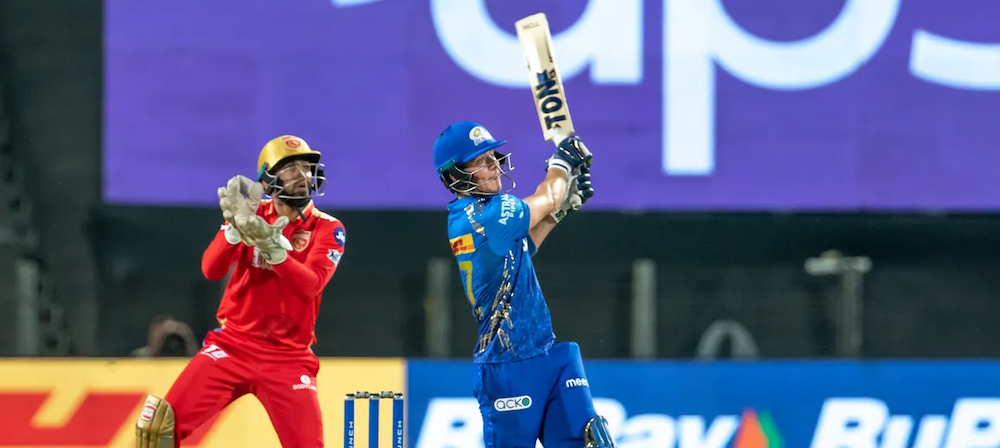
To gain a better understanding of the impact of the Global T20 franchise system on other cricketing formats I sought the opinion of a former Protea.
Specifically, I had an opportunity to chat with Henry Davids, former opener for the Titans, and Paarl Rocks franchises (winner of the MSL 2019).
While Davids never secured a formal IPL contract, he had the opportunity of playing in the IPL Champions League back in 2009 (for the Cape Cobras). At this tournament, he played in a semi-final against Trinidad and Tobago.
It was here that the likes of a young Kieron Pollard, Dwayne Bravo and Sunil Narine would play. This tournament would effectively set the foundation for the next 13 years in the IPL franchise system where the 3 West Indian players mentioned would end up playing for the Mumbai Indians, Chennai Super Kings and Kolkata Knight Riders respectively.
All of these teams subsequently ended up winning the IPL and amassed fortunes that they wouldn’t ordinarily have come across in the traditional formats. 10 years later, Davids would end up on the winning team and play an integral role in getting Paarl Rocks MSL glory.
Davids' 37-ball match-winning 50 here.
“Franchise T20 cricket is unbelievably good for cricket and great for the game. It is a great opportunity for individuals who have the opportunity of playing the game internationally and it also serves as an opportunity for players, especially younger players to improve their skills at the end of the day and show their talents on a global stage.”
Henry went on further to explain how T20 cricket has impacted other formats of the game.
Referencing Barstow’s recent 100 against NZ in the 3rd Test in England, Davids said: “You never would have imagined 20 years ago that Test cricket would have players like Pant, Bairstow and De Kock scoring 100s of 70-odd balls.
"The game is constantly changing and evolving, resulting in increased viewership. This brings people (spectators) back to the grounds.”
This form of the game has yielded significant interest from the younger population in particular.
This phenomenon was evident in 2016, 37% of IPL-related conversations on Social media originated from people between the ages of 18 to 20 and 26% from 21 to 24 years of age.
I asked Henry whether T20 is more favourable towards batters as opposed to all players, given the flat wickets and the high-scoring nature of the games.
“T20 wickets are batter friendly generally to keep things fan-centric and while keeping viewers in mind. However, there are wickets, which favour bowlers as well. The competition of T20 cricket relies on the skills of the bowlers and batters alike.”
Henry went on further to explain the skill of T20 bowlers and whether it has improved considerably as well. This was quite evident in T20 cricket to have a spinner open the bowling or come in the first 6 overs to thwart an aggressive opening start from the opposition.
So what have we learned?
Global T20 Franchise cricket has appealed to a much younger audience than the other formats. It had a positive impact on other formats of the game with different playing styles i.e. aggressive batting in particular.
It gives younger players better opportunities of playing international cricket and allows individual cricketers the creative space to try different ways in improving their game i.e. highly skilled batters competing against highly skilled bowlers and vice-versa.
While my allegiance remains with Test cricket, the T20 franchise system, namely the IPL and Big Bash has produced an entertaining product. Long may this continue!
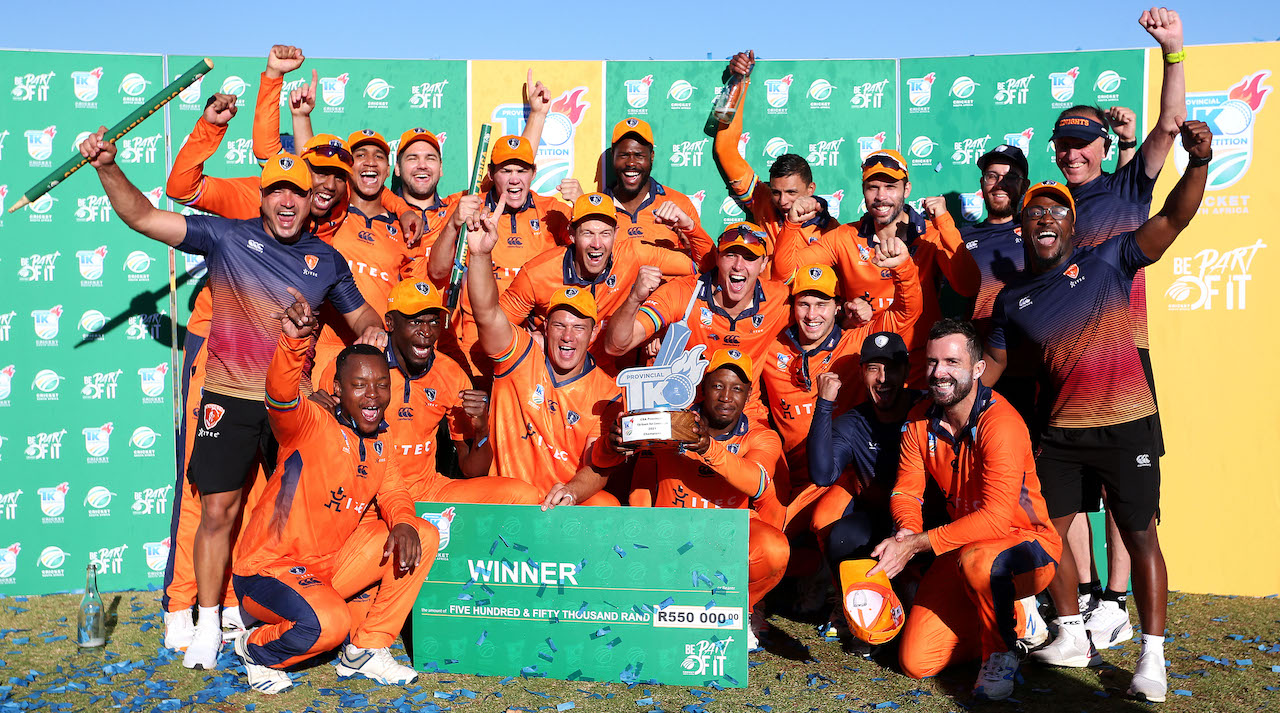
‘We are ruining the game’ – Omar Henry
By Marc Jacobson
In light of T20 cricket becoming a global money-spinner worldwide, South African cricket legend Omar Henry hints that the game has become fickle and therefore it needs to be managed precariously according to its different formats.
Henry, who played provincial cricket in the 70s, 80s and early 90s, said the game today is facing challenges in the sense that the different formats are imposing one another, whereas, as a collective, each should build the game up instead.
“Originally, Test cricket was the name of the game, before ODI cricket came and then T20s. Now we’re sitting with a challenge of how we should manage the game of cricket in terms of how it has evolved,” Henry told Cricket Fanatics Magazine.
“This is not just about playing the game – this is about marketing and financing the game,” he said, adding that he believes ICC are not particularly doing their part to lead the game either.
“India controls the game,” Henry said.
“Where are the numbers and where is the money? Do we make peace with that and try to bargain with India with the best possible deal for global cricket to grow or do we allow India to dominate the scenario?
“With T20 cricket, India grabbed it and got everything to their advantage. Now every other country is introducing it (T20 leagues).”
Henry, who played for the Proteas at the age of 40 in the twilight of his career, said in this respect South Africa has “fallen way behind due to their own misgivings and incompetence” concerning their administration of the game.
He noted various challenges that had fronted the game of cricket since its inception, namely the sustainability, development and transformation thereof, the last of which “includes inclusivity”.
“To market the game successfully in the entertainment world for people to watch it, and for television to be interested, you need to have an excellent product – it doesn’t matter which format.
“The question we have to ask ourselves as a nation, and globally, is whether we have mastered all those elements. A player can play T20 cricket today and make a good living, but players can also play 50-over and Test cricket and also make a good living.”
The product of cricket lends over to how players may adopt a sort of “T20 or 50-over mentality” even when playing Test cricket, Henry explained, giving the West Indian dominance in the 1970s and the days of Australia’s dominance in the 1990s and 2000s as examples.
Modernly, Henry pinpointed what England coach Brendon McCullum did with England for their 3-0 Test series whitewash recently over World Champions New Zealand as another example.
“Therein lays a blueprint of Test cricket being played with the mindset of a 50-over or T20 mentality.”
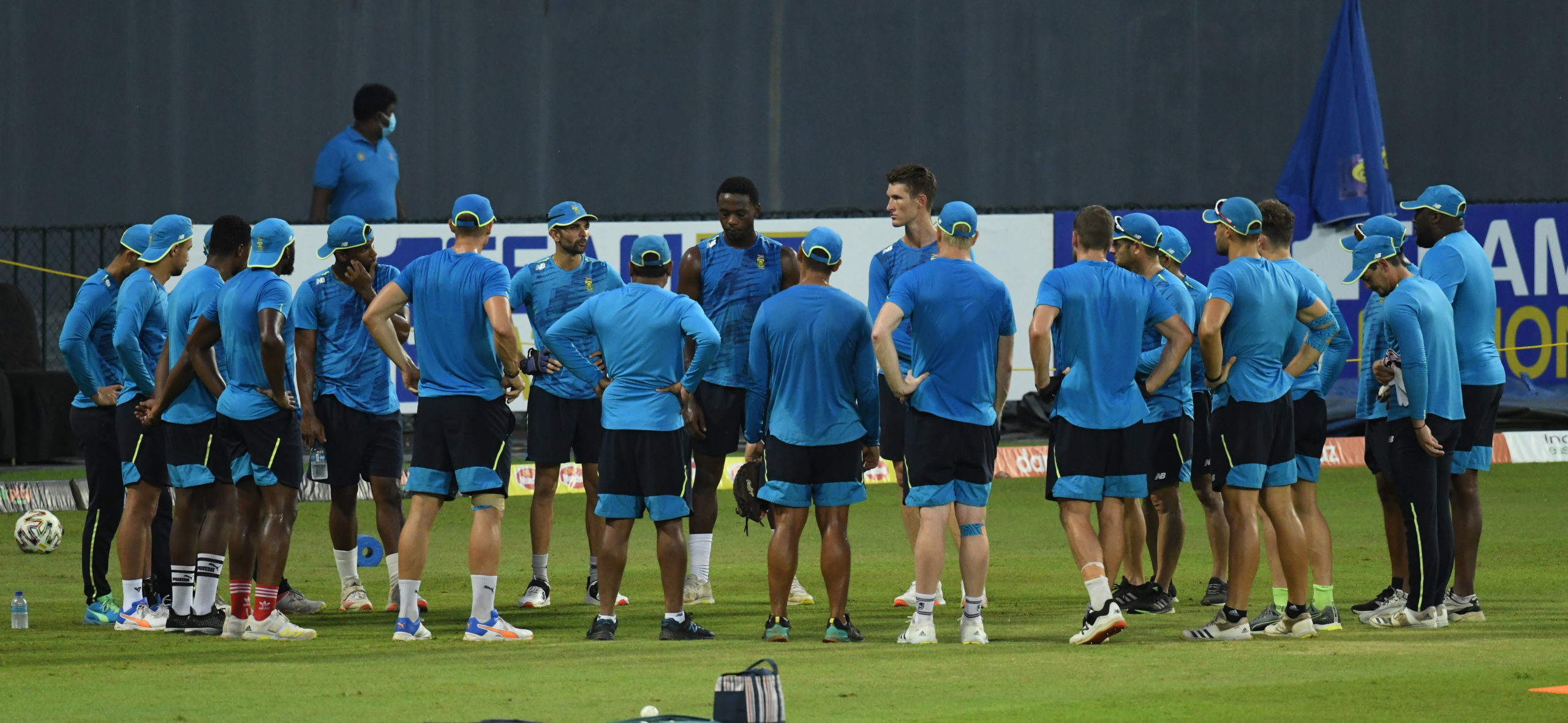
But with T20 cricket taking the limelight, despite the three formats meshing in terms of the style of cricket being played, there lies a challenge whereby the shortest format is getting the most recognition, especially with regards to revenue streams.
“We are ruining the game,” Henry said. “As administrators, we are ruining the game, because T20s fill the stadiums – eyeballs on the television.”
The former left-arm spinner explained a hypothetical and mental diagram that outlines the link between the cricketing environment, the architecture and structures thereof and the fans and players that drive the game.
“If the environment is not reinforcing those two, then there are flaws and weaknesses from within. If the people and players and architectures don’t contribute to the outcome, then there are flaws,” he explained.
“Who creates structures? Who creates processes? Who creates visions? People, players, coaches and administrators.
“We are responsible and accountable for the outcome,” he said, swaying from the belief that the actual format of T20 cricket is diminishing the game, but rather that strategies ought to be implemented using the backing and substance of each format.
Test cricket, he said, should always remain a priority since it is the sort of contest that ‘tests’ every strand of your being for five days.
“Now we have to look at how we can fit it into how the world, generations and game have evolved. McCullum has shown how. Can South Africa develop that mentality? That is our challenge.
“Since unification we’ve failed development and transformation. We were dominating world Test cricket and we lost that. We couldn’t find the right recipes to maintain it.
“The development programmes stopped spitting out players who can achieve or maintain what the previous generous had been able to.
The three formats of cricket should collaborate, rather than contradict and oppose each other, the 70-year-old explained from a simple business train of thought.
“There are three formats and that is your business, which means you can market more players, creating more jobs.”
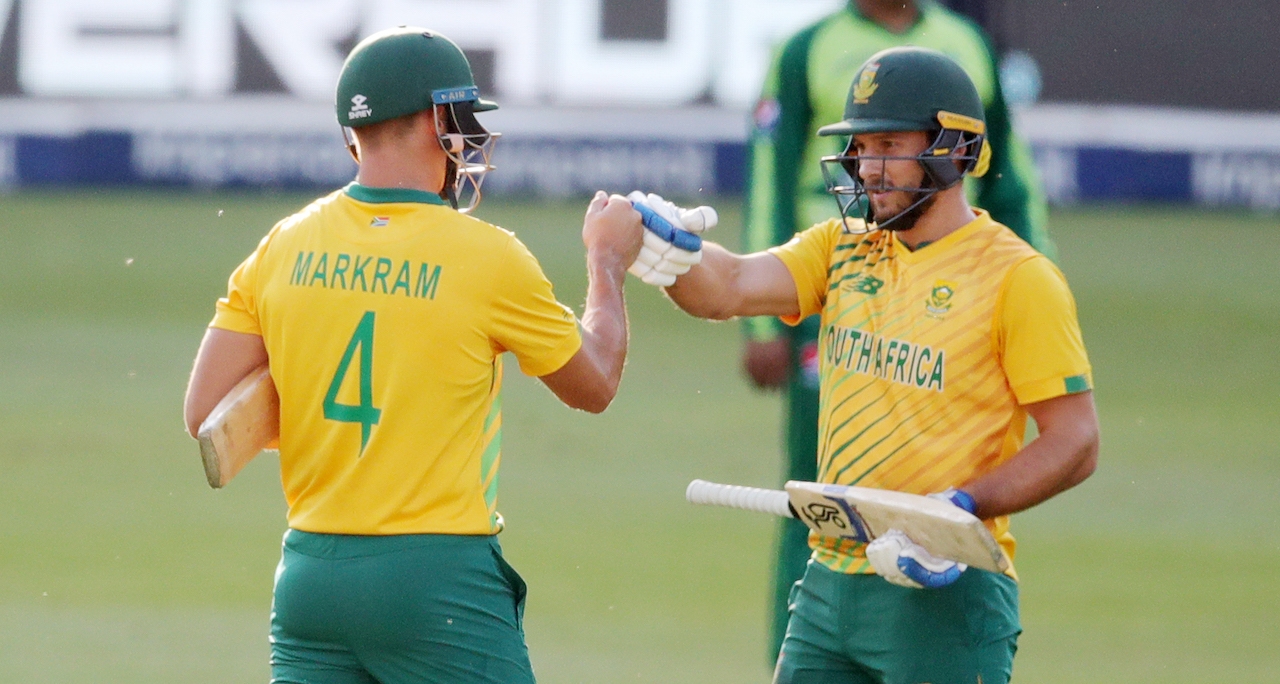
Coaches Must Allow Freedom in T20 Cricket
By Lubabalo Skhosana
As much as many of us would like to believe that we are “purists” of the game, there is really no denying T20’s significance within modern-day cricket. It has a huge influence on the following of cricket and on how the game is played.
Over the years we have witnessed a more offensive brand of cricket with the bat from most sides. We have witnessed more totals in excess of 400 scored in 50-over matches and more scores north of 200 posted and - on occasion - chased down in the 20/20 format.
T20 cricket may not be as old as the other formats of the game but it is rapidly growing and becoming the format everyone wants to watch. There are a few countries that we believe have not gotten it right yet.
Yes, these countries do win T20 matches but will generally struggle against the better T20 sides in the world.
South Africa is one of those countries and here are a few key areas that can be improved in order to improve T20 Cricket in the country. The majority of South African players do not play a lot of T20 cricket unless they are able to land an IPL contract or get to play in other domestic leagues.
This is evident in the slow evolution of SA cricket and the slow progress of T20 cricket. Our players are not playing enough of the format and thus aren’t developing their T20 game as expected.
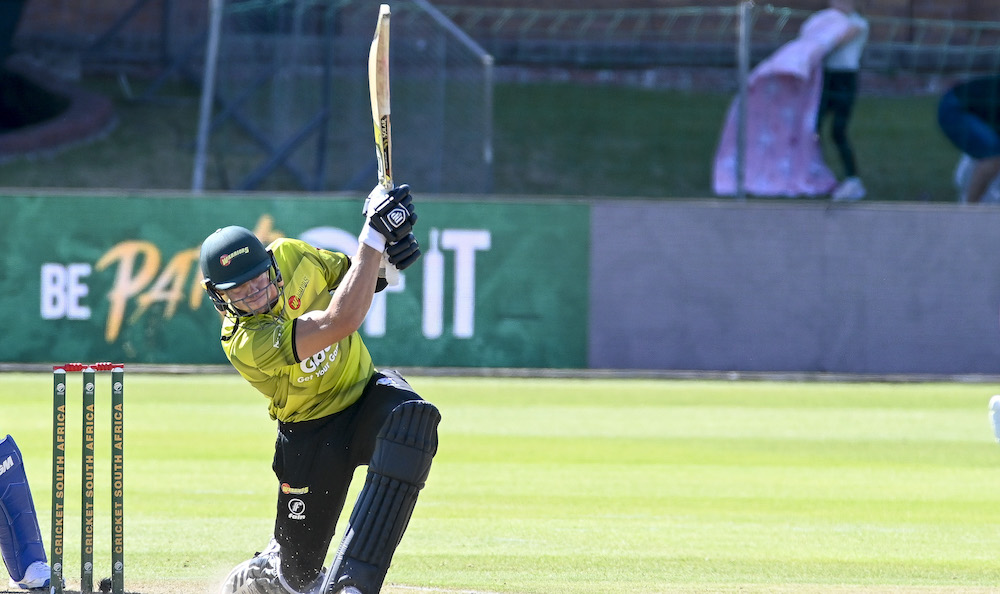
This is due to the fact that our tournaments in general have fewer teams and because we have fewer teams we tend to have fewer international or rather foreign players and we all know they boost the standard of tournaments.
This is a point that was also made by Leus du Plooy.
“The tournaments are both very competitive and extremely fun to play in. The only clear difference is that the Blast has more teams (18) compared to the Ram Slam (6) and generally more overseas players per team than the Ram Slam,” Du Plooy observed.
The Ram Slam has since been scrapped but the MSL and the CSA T20 Challenge.
Another contributing factor is the culture of cricket in SA and how we play cricket as a country. For a number of years now, I felt that we needed to take the England Cricket route in that we need to re-establish how we want to play as a country and how we want to coach the next generation of cricketers.
Modern cricket is about being a bully, asserting yourself on opposition and taking the game away from them very early. But the South African way of play is more around being cautious: Focusing on trying not to lose instead of trying to win.
The fact that the majority of South Africans believe that a T20 side needs an anchor is full proof of how behind we are as a country in a format that is about scoring fast and scoring big.
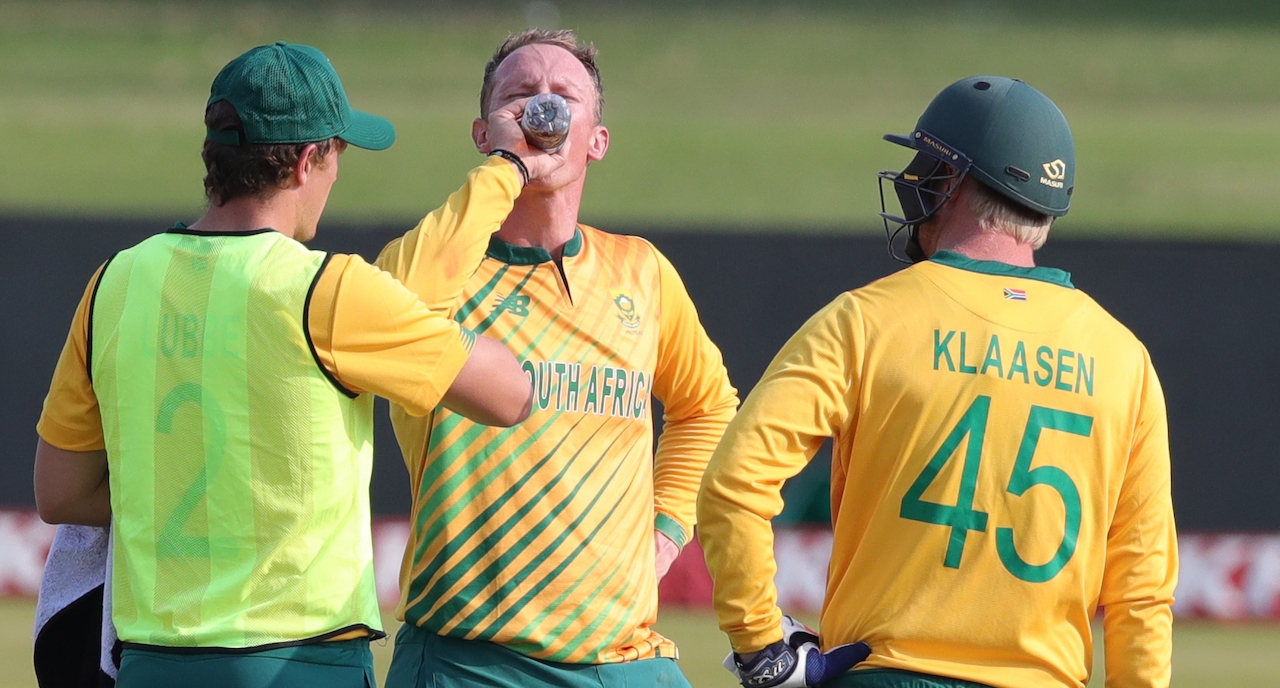
Our approach is still built around keeping wickets. Many of our youngsters are also not coached to play to their strengths and with freedom. This is something that hampers the growth and development of our T20 cricket because (especially when batting) its is about being fearless and ruthless.
Many of our T20I batsmen have very high dot-ball percentages and this format requires one to have a very low to negligible dot-ball percentage.
When asked what makes a good T20 side, Du Plooy stressed the need for coaches to allow players to play their natural game in order to deliver the desired results for the team.
“I think a strong T20 side backs their players to play the brand they want to individually, given that they practice the way they want to play. The brand needs to fit in with the team's end goal. This brand needs to remain consistent through defeat and victory.”
While many people may like to believe that T20 cricket is just about closing your eyes and hitting the ball as far as possible, it is important to note that the format is a game for thinkers. Those who have the ability to think on their feet and use conditions to their advantage are generally the ones that tend to win.
When batting and playing on a massive field for example, it would be very handy to keep the strike rotating in the form of singles and 2s etc. It is very important for T20 players to be able to read conditions and always be aware of their surroundings.
“To be able to assess the conditions and situation as quickly as possible and execute the best ball/shot at that moment accordingly. I’d say adaptability is a key attribute in T20, because of its fast-paced nature; ultimately two good/bad overs could win/lose you the game.”
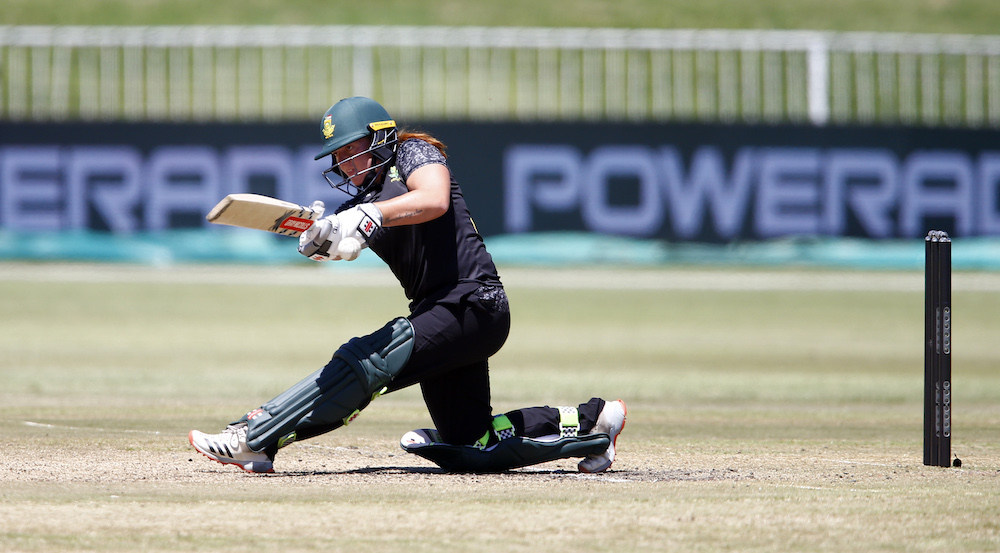
Q&A: Nadine de Klerk
Where and when did you get into cricket?
I got into cricket at the age of 11 where I started playing for Northerns. Before that I would just play with my brother on a farm when I was growing up playing backyard cricket. I really enjoyed it and had a lot of fun.
Eventually my dad said let’s give it a shot and he took me for Northerns trials, made the team, and I fell in love with the game and started cricket ever since then.
You made your ODI debut for SA in 2017 at the Quadrangular Series against India, and your T20 debut for SA against India in 2018. What were your thoughts and how did you feel?
Making my debut in 2017 feels like it’s been ages ago, but that was another highlight of my career, something I will never forget. It’s probably one of those moments in your life where it’s definitely on the top of your list.
Everybody dreams of making their debut for South Africa and wearing the Protea jersey. So, a very special moment in my career.
Nerve-racking as well and you never know what to expect but looking back today, it’s been quite a journey.
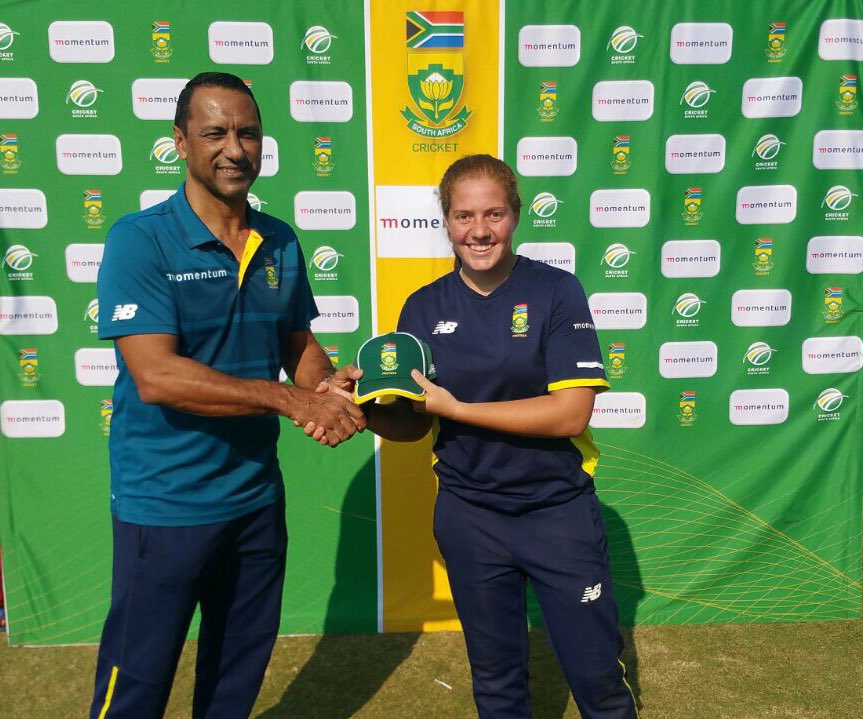
How do you balance both bowling and batting as a discipline in T20 cricket?
Being an all-rounder is quite tough, when it comes to load and training, it’s not the easiest of things to be as effective in both skills. But it is a really special thing to have.
I really love being an all-rounder but it is sometimes difficult to balance both, it’s quite hard on the body. You plan your days and weeks ahead and you know what you need to do to be ready to perform in any of those two skills.
Would you say there is more pressure on all-rounders in T20 cricket?
I won’t really say there’s more pressure on all-rounders in T20 cricket, actually there’s less pressure in my personal opinion because you know you have both skills.
Sometimes it’s difficult as just a batter or just a bowler where you can get smashed in a T20 game and there’s nothing else you can do about it.
You have to move on, where being an all-rounder even if you don’t contribute with the bat you can always contribute with the ball or vice versa. So, I think it’s really special to be an all-rounder especially in T20 cricket.
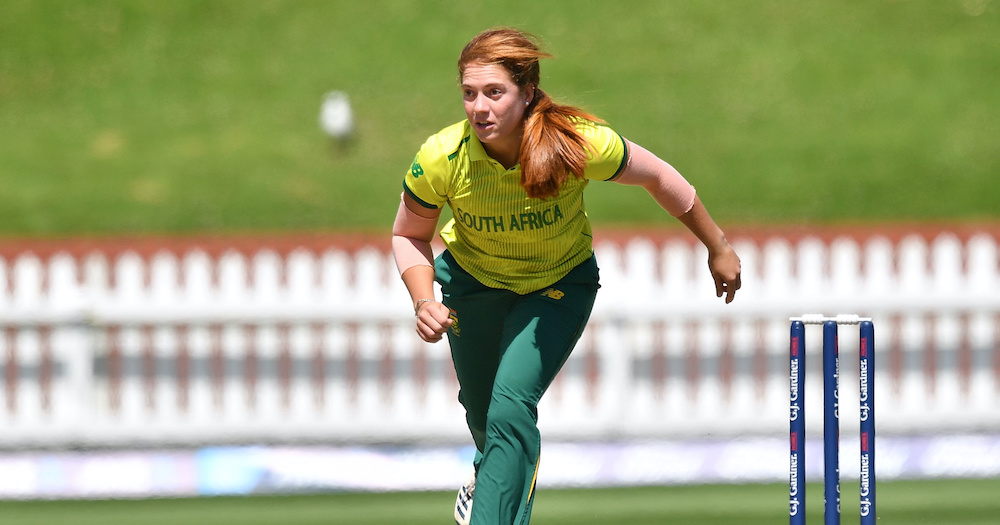
How do you deal with “dry spells”?
Dealing with a dry spell is always tough as a bowler because you’re running as hard as you can, try to hit your areas as consistently as possible. But it’s just really sticking to your guns, backing your skills, and your ability to bowl your best possible ball as often as possible.
At the end of the day you want to bowl on partnerships as well. You might have a dry spell or not pick up any wickets, but if you bowl nice and tight and keep the batters quiet then they might try and take on the other bowler on the other side and that’s sometimes how you get the wickets. Just keeping it really simple and sticking to your guns.
Describe your time at Brisbane Heat, how you felt being selected for the franchise for the first time. How would you say playing at Brisbane Heat improved your game in any way?
Playing for BH was a very exciting time in my career. I had a lot of fun, learned a lot, working with Noffers (coach Ashley Noffke), and just growing as a cricketer was immense in my career. And that’s what it’s all about, you want to grow as a cricketer, you want to learn a lot of new things, and improve on your skills.
They really believed in me and helped me understand my game better which made it easier to just go out there and play, and give your 100%. It definitely improved my game, especially from a bowling point of view.
Just keeping it simple, landing the ball on the same spot, using variations when needed. From a batting point of view, just being aggressive, backing your skill, not to be afraid to fail, and play your shots. That was a massive plus in my career.
Do you think international franchises such as the Big Bash League remunerate all-rounders advantageously?
I don’t really think so, I think in the BBL it’s all about the balance at the end of the day and certain players bringing certain skills to the party.
Being an all-rounder is definitely up there because you can offer both skills and play both roles, batter or bowler on the day. You can do both which helps.
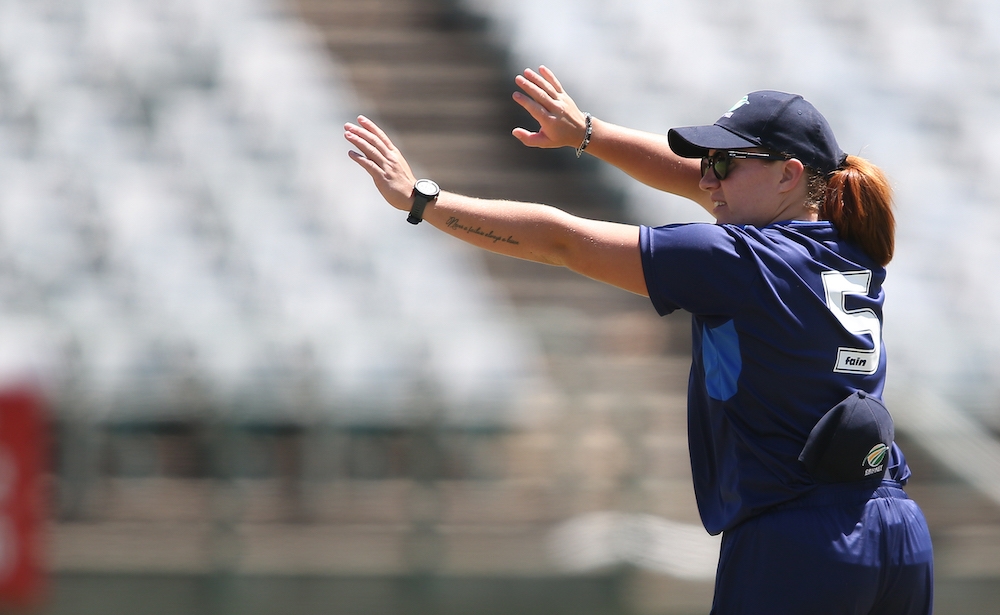
You captained the SA Emerging squad for a home series against Bangladesh in 2019. Was this your first time in this role?
Captaining the Emerging side was another highlight of my career. I enjoyed leading the team, we had a really good squad, with a few young ones there. It was my first time captaining at a higher level.
I used to captain the Northerns U19 team for 2 or 3 years. I was captain in a few of the Women’s Super Leagues that we play in South Africa.
I’ve also captained the Northerns Women’s team on quite a few occasions. But this was a first time captaining on a higher level than Provincial cricket. I absolutely loved it, I think it was really special and I think the team did really well.
Most memorable batting/bowling moment?
I would have to say was my knock against Bangladesh in the Emerging Series where the game ended in a draw. We had the Super over chasing 14 runs in that over.
That’s definitely my most memorable batting moment. My best bowling moment was the World Cup semifinal against Australia.
Whose wicket would you dream of taking?
The wicket I would dream of taking is probably Sophie Devine or Alyssa Healy.
Favourite cricketer(s)?
Sophie Devine and Jacques Kallis

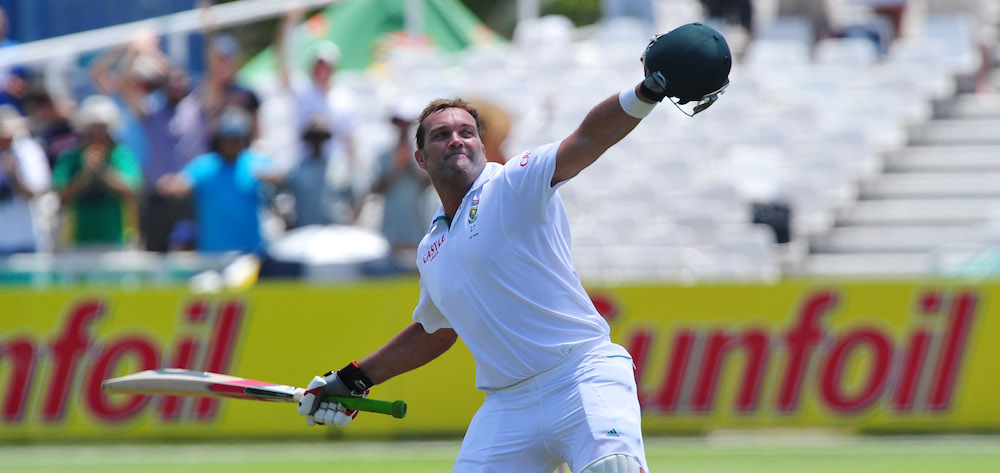
Fantasy opening batting duo?
That’s quite interesting… I think I would like to see Laura Wolvaardt bat with maybe Sophie Devine or Alyssa Healy. I think that could get quite interesting. Or even Alyssa Healy with Sophie Devine.
What are your favourite places to travel/tour?
That’s quite difficult, I must say I’ve enjoyed every bit of Australia and even New Zealand, those have been my favorite places to be. I spent a few weeks in Brisbane and absolutely loved it there.
Favourite food?
That’s a good question… I love any sort of pastas or meat, I’m a massive meat lover so love having a braai and eating a lamb chop with my mom’s salad. It’s always good.
Do you have a nickname amongst your teammates?
My nickname among my team mates is ‘Naydz’, one or two call me Noodle or Poodle, which ever one they find best on the day.
Daily Show | Let's talk about it
Video Playlist
The Podcast Live Show:
Exclusive Interviews
Crossword Puzzle
Cricinfo's IPL 2022 XI
ISSUE 23: Crossword Answers


Magazine info
Editorial Director
Khalid Mohidin
IT and Technical Director
Faizel Mohidin
Contributors
Abhai Sawkar
Aditya Mehta
Chris Chiwanza
Jessica October
Janine October
Khalid Mohidin
Lubabalo Skhosana
Marc Jacobson
Ongama Gcwabe
Graphics
Khalid Mohidin (Cover and Graphics)
Images
BackpagePix
Supplied
Twitter
Facebook
Video Binge List:
On Lockdown Series
The Podcast Show
Legends with Ravi
Daily Show